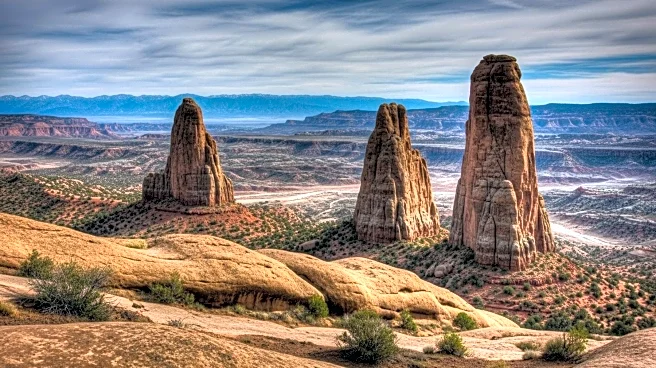What's Happening?
Recent research suggests that the extinction of dinosaurs led to significant changes in Earth's landscapes, particularly in North America. Dinosaurs, acting as ecosystem engineers, influenced vegetation and river patterns by trampling and grazing, preventing plant establishment. The study, led by Luke Weaver at the University of Michigan, examined geological changes in river floodplains in the western U.S., noting differences in rock formations before and after the Cretaceous–Paleogene extinction event. The disappearance of dinosaurs allowed tree roots to stabilize sediment, transforming boggy mudstone into stable rivers with broad meanders.
Why It's Important?
The findings highlight the profound impact large animals can have on their environment, drawing parallels to human-induced landscape changes. Understanding the role of dinosaurs in shaping ecosystems provides insights into how the removal of large herbivores today could affect vegetation and river dynamics. This research challenges previous hypotheses attributing landscape changes solely to the asteroid impact, offering a new perspective on the ecological consequences of dinosaur extinction.
What's Next?
Further research using isotopic data from fossil leaves may help verify the hypothesis that dinosaurs were key ecosystem engineers. This could lead to a deeper understanding of historical ecological dynamics and inform current conservation efforts regarding large herbivores and their role in maintaining ecosystem balance.
Beyond the Headlines
The study raises questions about the long-term ecological impacts of removing large animals from ecosystems, suggesting that their presence or absence can significantly alter vegetation patterns and landscape stability. This has implications for modern conservation strategies and the management of large herbivore populations.












